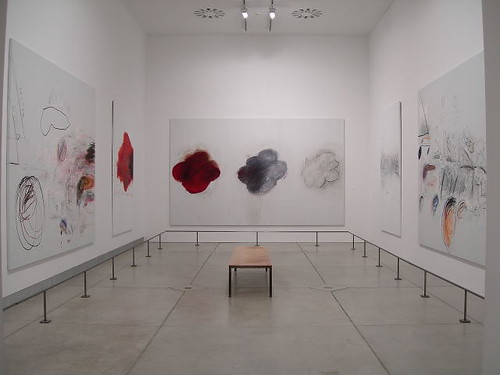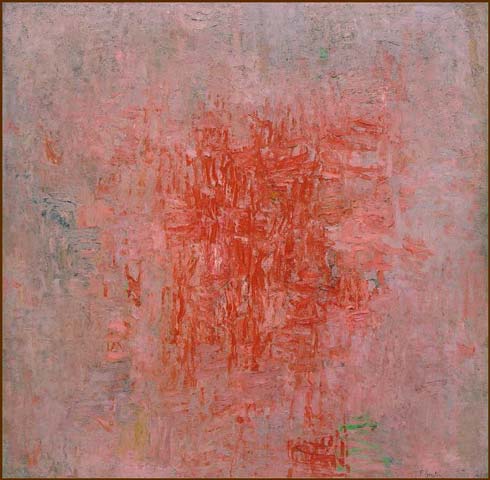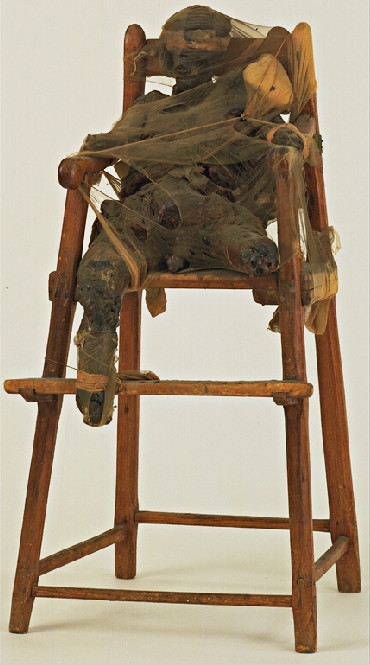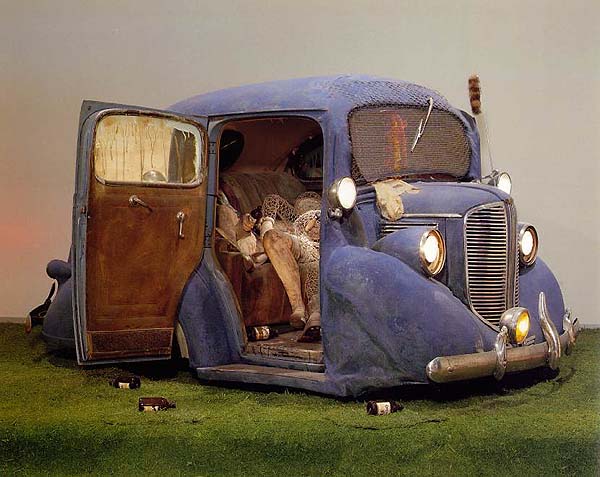I haven't updated about art I've seen in a while, but a couple of the shows I saw last night made a strong enough impression that I feel like remembering them here.
Andrea Morales' exhibition "Public Play" at Practice Gallery spoke to me as an investigation of the complex social dynamics involved in dating--specifically, how we perform personas within varying social contexts. The premise of the exhibition was Morales having organised a consecutive series of dates through OKCupid and Craigslist, to be carried out within the gallery. Documentation of her correspondences with her dates were plastered on the walls for viewers to read when they weren't acting as voyeuristic observers of the activities of the dates themselves. The dates/ exhibition were all documented throughout the night, and the plan is for the edited footage to be exhibited at Practice for the remainder of the month.
There is so much about the concept and the execution of this piece that I love. I love that the artist is directing and composing these interactions for the express purpose of manifesting this exhibition, while leaving room for risk, chance, play, and vulnerability (to her collaborator and her audience). I love that live performance, the documentation leading up to the performance, and the documentation of the performance itself are all integral aspects of the piece. I love the fact that, even though you are in the room with the artist and her dates, observing their interaction and reading their correspondence, there are elements of their conversations that do remain private/ intimate/ just between them. Sure, you can see their body language, maybe even catch snippets of dialogue, but you remain at a distance, a member of the crowd--you can't see and hear every element of the exchanges that build the date they are on.
I only had the chance to see one of the dates--the third of the night. When I walked in, the space was illuminated by red lights. There was music playing, and I could see the artist and her date sitting on a bench behind parted curtains. They were both hunched over a camera, presumably shuffling through images. In speaking with one of the members of Practice, I gleaned that this date had actually been photographing the earlier dates, so they were looking through the images he had taken. I wanted to make it back to the final date of the evening, which was supposed to be with a female partner, and verge on more sexually charged content, but I missed it unfortunately.
I was sorry to miss the rest of "Public Play," but I was so happy I made it out to New Boone for "Forever," a collaborative exhibit featuring paintings by my studio-mate Kim Altomare and audio commentary by Anne Pagana. If I had to express my overwhelming impression of the exhibit in one adjective, I would use 'refreshing'--everything about the approach felt like a sigh of relief followed by a breath of fresh air. First and foremost, the experience of seeing Kim's paintings hung and lit within the context of a gallery space was thrilling for me--so much luster and detail that is hard to recognize when they're leaning against a studio wall came suddenly alive. It felt like the paintings themselves had been energized/ taken on a new life, and I was so filled with joy for them! The curatorial detailing--the incorporation of a friendship bracelet-making station [they'd run out of string by the time I got there :( ]; the integration of vibrant pom poms, shimmery sequins, tinsel, streamers, and googly eyes; the coordinated vignettes built out of objects contributed by Kim and Anne's artist friends, placed to keep the paintings company; the hand-articulated signage and decorated CD-players with headphones whose color matched the vibrancy carried throughout--all contributed to the overarching spirit of friendship and collaboration coursing throughout the show. Walking into the space, every aspect seems to squeal, "Hi! We're so glad you're here! Come be our friend! Stay a while! Look and listen and contemplate with us!" And how can you refuse that?
Which isn't to say that the content of the work presented is necessarily light or superficial--Kim's paintings incorporate symbolic imagery that alludes to death and violence, and Anne's commentary is deeply meditative. There is an audio track corresponding to each painting. I didn't listen to all of them, but those I did made it clear to me that Anne's spoken words access avenues of thought that are quite serious, and speak to a genuine desire for mutual understanding within the insular context of a friendship that exists within the broader, but still insular context of art-making. There is a sensitivity and consideration for the differences and commonalities in hers and Kim's experiences with and approaches to art and life. There is frustration and confusion, but also serenity to the acknowledgment that not everything can necessarily be fully understood between two people. I felt honored to be invited to listen to these meditations, and though they were focused on a personal relationship, I felt included because the concepts being considered speak to interpersonal relationships in general, and art-making practices more broadly. I got the sense that, though these are complex and difficult territories to navigate, underlying currents of hope, togetherness, and fun can carry us through.
Looking at the show through a feminist lens, I was struck by how it sits within the context of art history, which is so frequently dominated by men celebrating, commenting on, responding to, competing with each other, usually in a very egotistical way that has a lot to do with proving who has the most "genius". The mode of collaboration in "Forever" is definitely in dialogue with that tradition, but from a much more authentic, sincere, down-to-earth perspective. Celebrating each other does not have to be about proving anything--it can be about inviting everyone into this dynamic of mutual consideration and dialogue, of approaching things in a genuine way, together.
I think I responded to strongly to both of these exhibits because I like what they indicate about where art practice and art exhibition is heading. There is a sense of breaking things down and exploring them from new angles that I find so empowering and exciting. It makes me feel a sense of freedom, like there is license to explore new territories and just try things to see where they go. As there should be. No more musty, tired art shows ever please!
Showing posts with label Painting. Show all posts
Showing posts with label Painting. Show all posts
Saturday, March 7, 2015
Thursday, January 20, 2011
How Musical Compositions Could Parallel Painterly Compositions
I just learned something that I've been intending to learn about music for a long time now. I've noticed that when I listen to certain songs that I would characterize as melancholy, I hear a particular pattern to the way the sounds progress that distinguishes them from songs that would make me feel happy. Not being a student of music theory, I had no idea what this pattern could be called, and equally few ideas as to how to even ask what it might be called for fear of just sounding insane ("You know that thing that some songs have that make them feel sad? What is that called?"). Luckily, one of my roommates is knowledgeable about musical composition, and completely by chance, helped me determine that the pattern I was hearing is sustained chords resolving in minor. She explained that major chords (and their simple cousins, power chords) generally make for the happier, more upbeat songs, whereas minor chords tend to generate angsty, frustrated, uneasy sounds. When you mix them up, implying the hope of a major chord, only to resolve in minor, you get melancholy. (Example: I perceive Neutral Milk Hotel's "Two-Headed Boy Part 2" as more emotive than "Two-Headed Boy" because Part 2 resolves in minor, whereas "Two-Headed Boy" is in major--it's a serious achievement for me to be able to finally vocalize that difference)
How does this apply to visual art, you ask?
Well, after being enthralled by my new-found discovery for several minutes (going through my sad mood playlists and identifying that indeed they all resolve in minor, in truly fascinated geek fashion), I then naturally started thinking about painting, and how important music is for me when I paint. I often find that the kind of music I listen to when I paint ends up affecting the kind of painting I end up doing that day. So I thought, "what formally in painting gives me the strongest sense of feeling?" Color of course. So what would be the relationship between colors and chords? I think I'd associate warm colors with major chords and cool colors with minor chords. If this is an accurate association, one could conceivably paint a painting that resolves in minor! I'm ecstatic about this!
Think about it: If you wanted to get really technical, you could assign a different color to every chord and just paint the composition of a song, ideally producing the same emotional effects in the viewer of the painting as the song gives its listener. You could listen to a song, hear the progression of the chords, and be able to harness the feeling you get from that musical composition, translating it into the visual by means of color! Did Rothko know about this?
How does this apply to visual art, you ask?
Well, after being enthralled by my new-found discovery for several minutes (going through my sad mood playlists and identifying that indeed they all resolve in minor, in truly fascinated geek fashion), I then naturally started thinking about painting, and how important music is for me when I paint. I often find that the kind of music I listen to when I paint ends up affecting the kind of painting I end up doing that day. So I thought, "what formally in painting gives me the strongest sense of feeling?" Color of course. So what would be the relationship between colors and chords? I think I'd associate warm colors with major chords and cool colors with minor chords. If this is an accurate association, one could conceivably paint a painting that resolves in minor! I'm ecstatic about this!
Think about it: If you wanted to get really technical, you could assign a different color to every chord and just paint the composition of a song, ideally producing the same emotional effects in the viewer of the painting as the song gives its listener. You could listen to a song, hear the progression of the chords, and be able to harness the feeling you get from that musical composition, translating it into the visual by means of color! Did Rothko know about this?
Thursday, December 30, 2010
The List, Installment 6: Assemblage
Today's installment is gonna get ugly. Visceral, disgusting, ephemeral--I'm talking entropy. I'm talking shit that pushes the boundaries of what constitutes Art. I'll start with someone familiar
Robert Rauschenberg:

Rauschenberg wasn't afraid to get messy. His combines incorporated found objects, including underwear, bedsheets, and taxidermy animals, giving the paint a bodily, sometimes scatological feel. And this was the 50s, mind you
Bruce Conner:
Creepy right? Conner favors nylon stockings, costume jewelry and fur in his pieces. Dark, twisted, disturbing, violent. Check, check, check, check. But look at how the fetishized materials communicate content.
Edward Kienholz:

Kienholz made tableaux depicting macabre representations of bars, brothels, the seedy underpinnings of daily existence. These pieces are unavoidable attacks that expose society's twisted secrets. Plus, resin just makes everything disturbing.
Paul Thek:
I recently saw the Paul Thek show at the Whitney (which is up until Jan 9th, so go see it if you haven't). His meat sculptures are some of the most delightfully revolting things I've ever seen in person. They're made of resin, beads, human hair, among other things, and are encased in plexi boxes. A couple even had big ol' plastic flies accompanying the festering "flesh". They're nauseatingly convincing. In a good way. Thek also made full body casts which he used to create alter egos for himself including the Dead Hippie and Fishman. I stood under the Fishman piece, mentally willing one of the flimsier bits of laytex to fall on me. The curatorial intern said it would have been highly possible.
Wow, there's a lot of testosterone in this post...Next post I'll have to call out Carolee Schneemann to represent...
Labels:
Artists,
Assemblage,
Exhibitions,
Inspiration,
Painting,
Sculpture
Tuesday, November 23, 2010
The List, Installment 4: Messy Painters
I'm home in Pennsylvania for Thanksgiving for the rest of the week, and I didn't quite finish the pieces I'm working on over the weekend. They'll have to be done by Monday though, because that's when we're installing the end of semester exhibition, the opening for which will be on Wednesday, December 1st (shameless plug). So that means that there will in fact be another post of work that I actually made quite soon (with installation shots, no less). Hooray! But for now, let's pick up where we left off in the wonderful world of painting! I'm going to follow my initial plan of keeping it to small associative groups, but this time I'll just let you draw your own conclusions as far as categorization (for the sake of my own sanity). Alright, deep breath, here we go:
Joan Mitchell:







Cy Twombly:





 That last image, the one right above this text...I stood in that room. It was fantastic. (It's at the PMA, so you can stand there too the next time you're in Philly!)
That last image, the one right above this text...I stood in that room. It was fantastic. (It's at the PMA, so you can stand there too the next time you're in Philly!)
Philip Guston:




 Just for the sake of comparison/ full disclosure, Guston also made work like this:
Just for the sake of comparison/ full disclosure, Guston also made work like this:
 I know, crazy right?
I know, crazy right?
That's all for now. I may or may not post again before the show...
Joan Mitchell:







Cy Twombly:





 That last image, the one right above this text...I stood in that room. It was fantastic. (It's at the PMA, so you can stand there too the next time you're in Philly!)
That last image, the one right above this text...I stood in that room. It was fantastic. (It's at the PMA, so you can stand there too the next time you're in Philly!)Philip Guston:




 Just for the sake of comparison/ full disclosure, Guston also made work like this:
Just for the sake of comparison/ full disclosure, Guston also made work like this: I know, crazy right?
I know, crazy right?That's all for now. I may or may not post again before the show...
Subscribe to:
Posts (Atom)

















